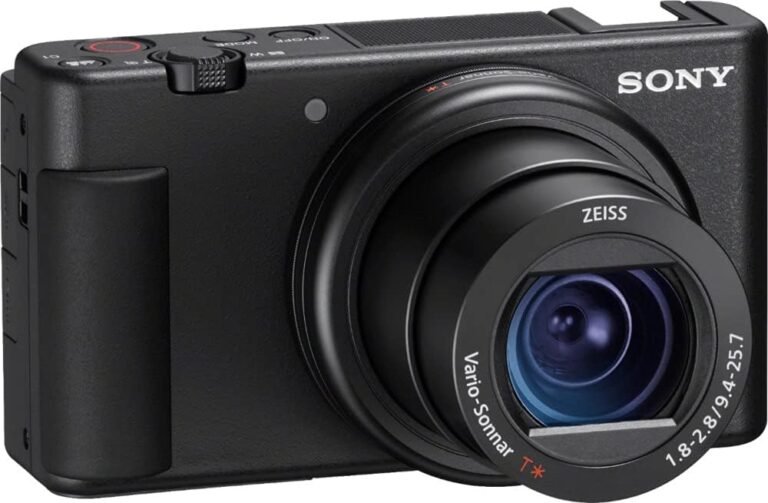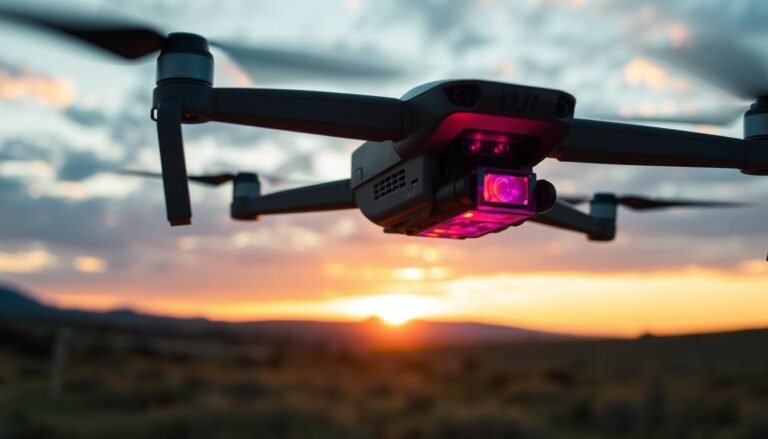The Evolving Role of Cameras in Modern Life
Cameras have become essential tools in nearly every aspect of modern life. From the smartphones we carry everywhere to specialized equipment used by professionals, camera technology continues to evolve and expand its influence across industries and personal use cases.
Personal Documentation
Today’s cameras allow us to preserve memories with unprecedented clarity. Family gatherings, travel adventures, and everyday moments can be captured in stunning detail, creating visual time capsules that last generations.
Professional Applications
From commercial photography to filmmaking, journalism to scientific research, professional-grade cameras provide the image quality and control needed for specialized work across countless fields.
Security and Monitoring
Security cameras protect homes and businesses, while specialized cameras monitor everything from traffic patterns to wildlife conservation efforts, helping us better understand and safeguard our world.
Ready to find your perfect camera?
Explore our comprehensive guide to camera types and features to make an informed decision.
Understanding Different Types of Cameras
The camera market offers diverse options to suit different needs, skill levels, and budgets. Each camera type has distinct advantages and limitations that make it ideal for specific uses. Understanding these differences is the first step in choosing the right camera for your needs.

DSLR Cameras
Digital Single-Lens Reflex (DSLR) cameras have long been the standard for professional photographers and serious enthusiasts. These cameras use a mirror mechanism to direct light from the lens to an optical viewfinder, providing a direct view of your subject.
DSLR Advantages
- Excellent image quality with larger sensors
- Optical viewfinder shows exactly what you’ll capture
- Extensive lens compatibility with vast ecosystems
- Superior battery life compared to mirrorless cameras
- Robust build quality for professional use
DSLR Limitations
- Larger and heavier than mirrorless alternatives
- Mechanical parts can wear out over time
- Typically more expensive for entry-level models
- Less advanced video capabilities than newer systems
- Slower autofocus in live view mode
Popular DSLR models include the Canon EOS Rebel T7 for beginners and the Nikon D7500 for more advanced photographers. These cameras offer excellent image quality and a wide range of compatible lenses to grow with your skills.
Mirrorless Cameras
Mirrorless cameras have revolutionized the photography world by eliminating the mirror mechanism found in DSLRs. Instead, light passes directly from the lens to the digital sensor, with the image previewed on an electronic viewfinder or rear screen.

Mirrorless Advantages
- Compact and lightweight design
- Silent shooting capabilities
- Superior video performance
- Advanced autofocus systems with eye tracking
- Electronic viewfinder shows exposure preview
Mirrorless Limitations
- Shorter battery life than DSLRs
- Fewer native lenses for some systems
- Electronic viewfinders can lag in low light
- Higher-end models can be expensive
- May overheat during extended video recording
The Sony Alpha a7 III and Canon EOS R10 represent excellent mirrorless options at different price points. Mirrorless technology continues to advance rapidly, with many professionals switching from DSLR systems.
Considering a mirrorless camera?
Explore the latest mirrorless models from top brands like Sony, Canon, and Nikon.
Point-and-Shoot Cameras
Point-and-shoot cameras (also called compact cameras) offer simplicity and convenience in a pocket-sized package. These cameras feature fixed lenses and automatic settings that make photography accessible to casual users.
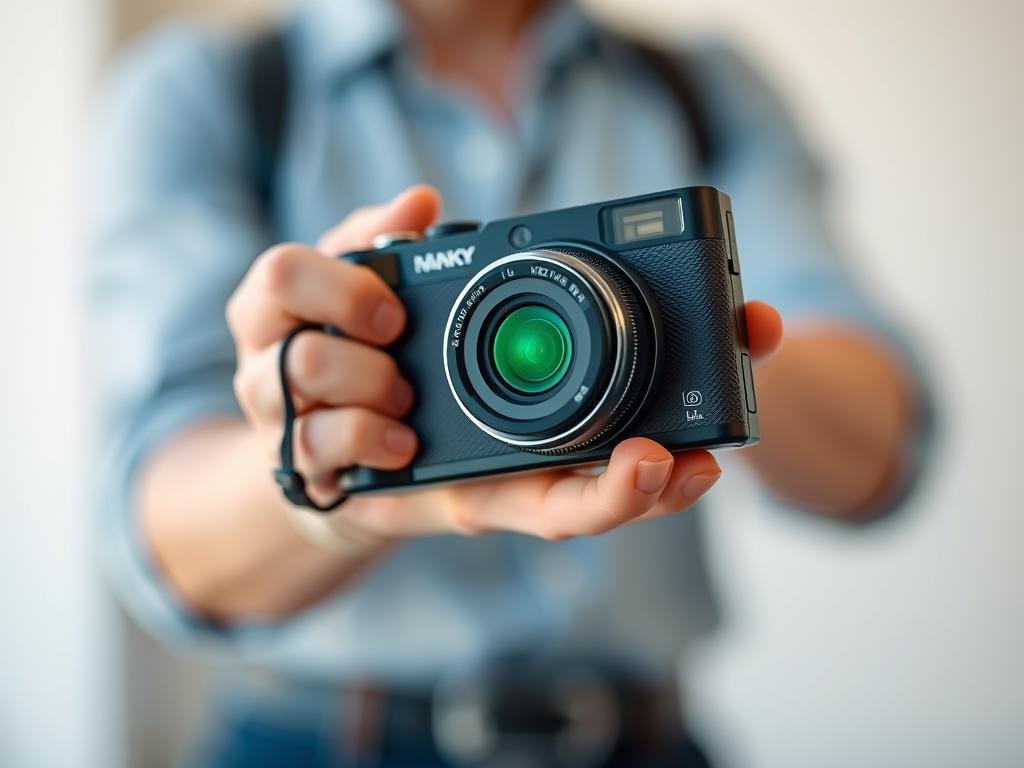
Point-and-Shoot Advantages
- Compact and highly portable
- Simple operation with automatic modes
- More affordable than interchangeable lens cameras
- Better optical zoom than smartphones
- No need to carry multiple lenses
Point-and-Shoot Limitations
- Smaller sensors limit image quality
- Fixed lens with no upgrade options
- Limited manual controls for creative shooting
- Slower performance than higher-end cameras
- Smartphone cameras increasingly competitive
Action Cameras
Action cameras are designed for capturing adventures in extreme conditions. These small, rugged cameras can be mounted to equipment or worn on the body to record immersive first-person footage.

Action Camera Advantages
- Extremely compact and lightweight
- Waterproof and shockproof construction
- Wide-angle lens captures immersive footage
- Excellent image stabilization
- Versatile mounting options
Action Camera Limitations
- Limited zoom capabilities
- Smaller sensors affect low-light performance
- Fixed wide-angle perspective
- Limited battery life
- Audio quality often compromised
Smartphone Cameras
Modern smartphone cameras have revolutionized photography by making high-quality imaging accessible to everyone. Computational photography techniques help these small cameras produce impressive results despite physical limitations.
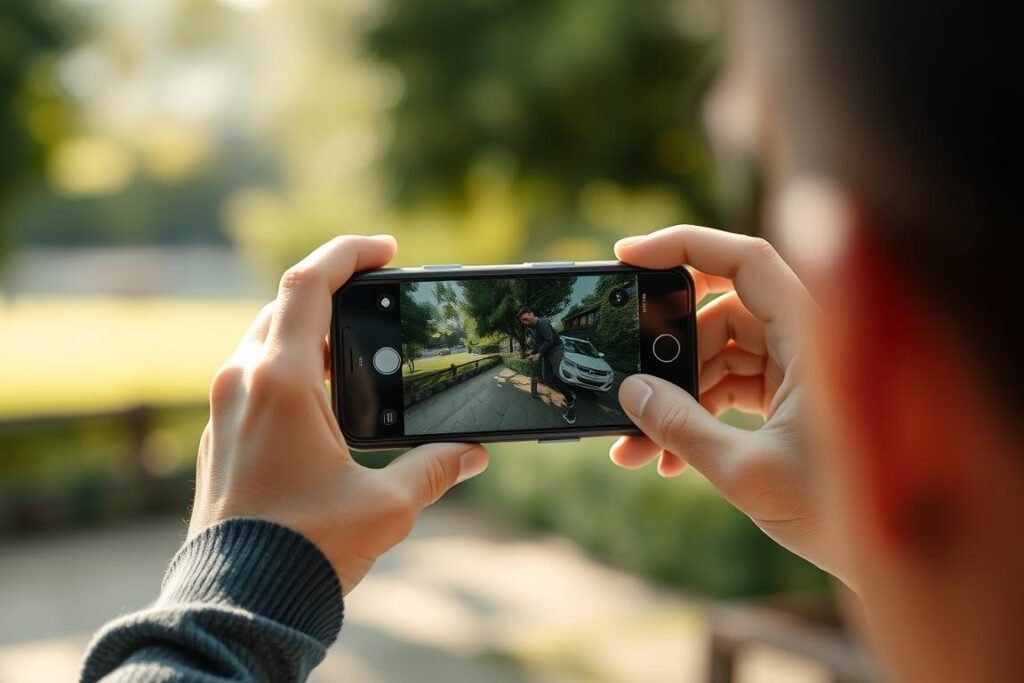
Smartphone Camera Advantages
- Always available in your pocket
- Computational photography enhances images
- Instant sharing to social media
- Multiple lens options on premium models
- Powerful editing apps built-in
Smartphone Camera Limitations
- Tiny sensors limit overall image quality
- Limited optical zoom capabilities
- Reduced dynamic range
- Less control over depth of field
- Battery drain with heavy camera use
Specialized Cameras
Beyond consumer cameras, specialized imaging devices serve specific technical and professional needs. These include security cameras, thermal imaging cameras, high-speed cameras, and industrial inspection cameras.
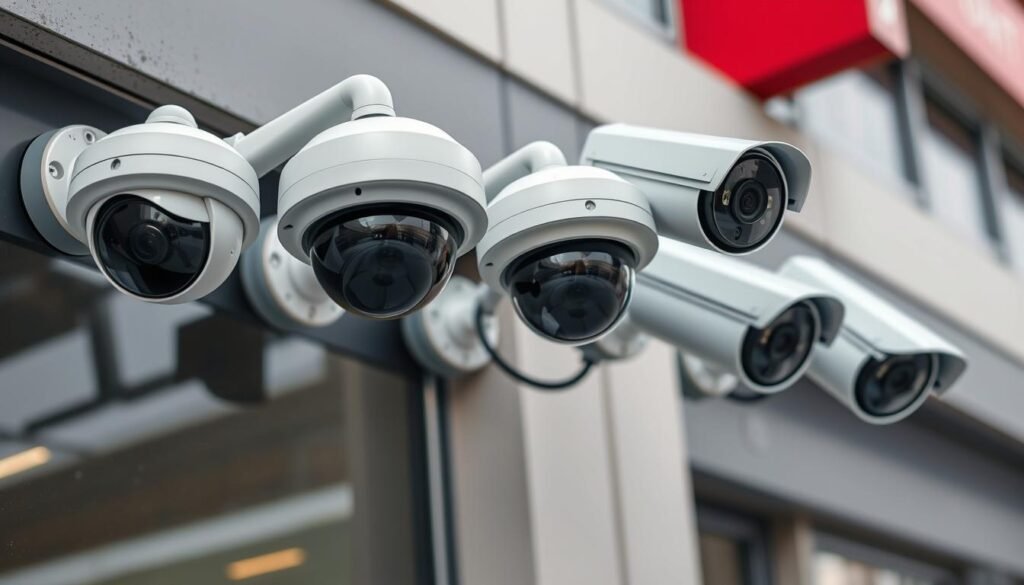
Security Cameras
Modern security cameras offer high-resolution video, night vision, motion detection, and cloud storage. These systems can be monitored remotely via smartphone apps and provide valuable security for homes and businesses.
Thermal Cameras
Thermal imaging cameras detect heat signatures rather than visible light. They’re used in firefighting, building inspection, wildlife observation, and increasingly in industrial applications for preventive maintenance.
Not sure which camera type is right for you?
Take our quick assessment to find the perfect camera for your needs and budget.
Understanding Key Camera Features
When evaluating cameras, several technical specifications determine image quality, performance, and versatility. Understanding these features helps you make informed decisions based on your specific photography needs.
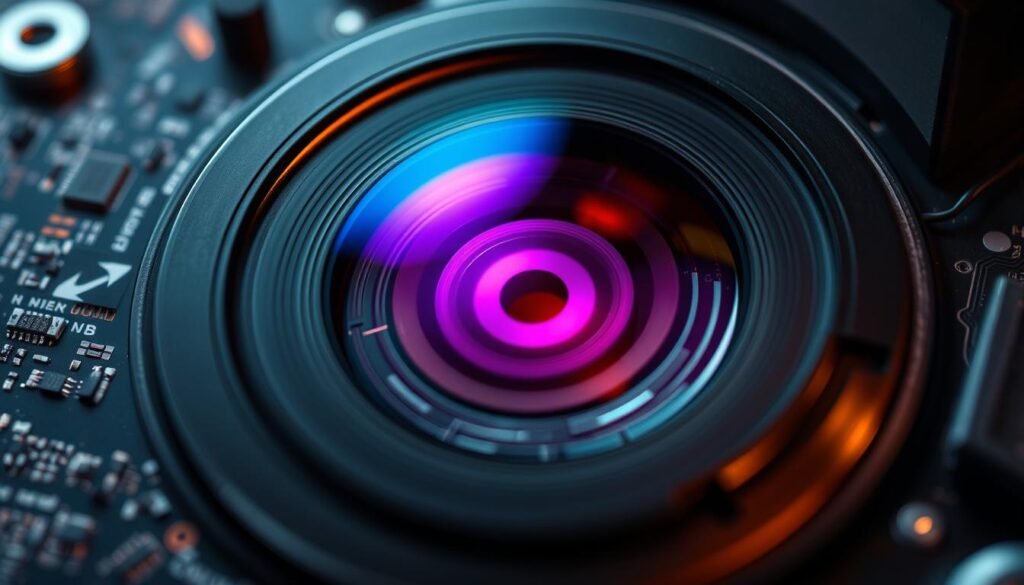
Resolution and Sensor Size
A camera’s resolution (measured in megapixels) and sensor size are fundamental to image quality. While megapixels determine how much detail a camera can capture, sensor size often has a greater impact on overall image quality, especially in challenging lighting conditions.
| Sensor Type | Relative Size | Common Camera Types | Image Quality Benefits |
| Full Frame | 1x (35mm) | Professional DSLR, High-end Mirrorless | Superior low-light performance, shallow depth of field, wider dynamic range |
| APS-C | 0.6x | Consumer DSLR, Mid-range Mirrorless | Good balance of quality and portability, extended reach for telephoto |
| Micro Four Thirds | 0.4x | Mirrorless (Olympus, Panasonic) | Compact system size, lightweight lenses, good for travel |
| 1-inch | 0.1x | Premium Point-and-Shoot | Better than smartphone quality in compact body |
| Smartphone | 0.01x | Mobile Phones | Computational photography compensates for small size |
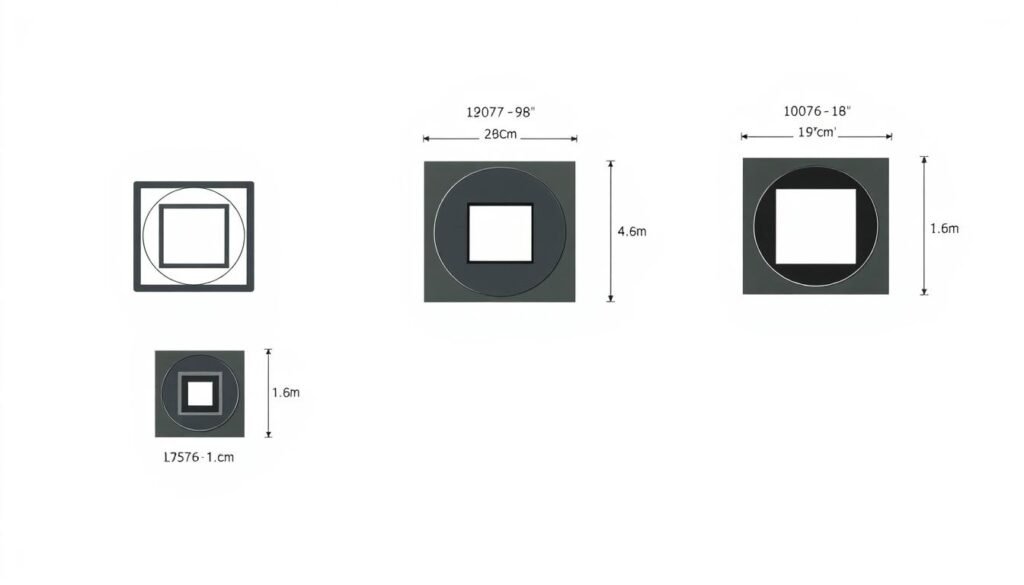
Lens Compatibility and Quality
For interchangeable lens cameras (DSLRs and mirrorless), lens selection dramatically impacts your photographic capabilities. Lenses vary in focal length, aperture, and specialized features like macro or tilt-shift functionality.
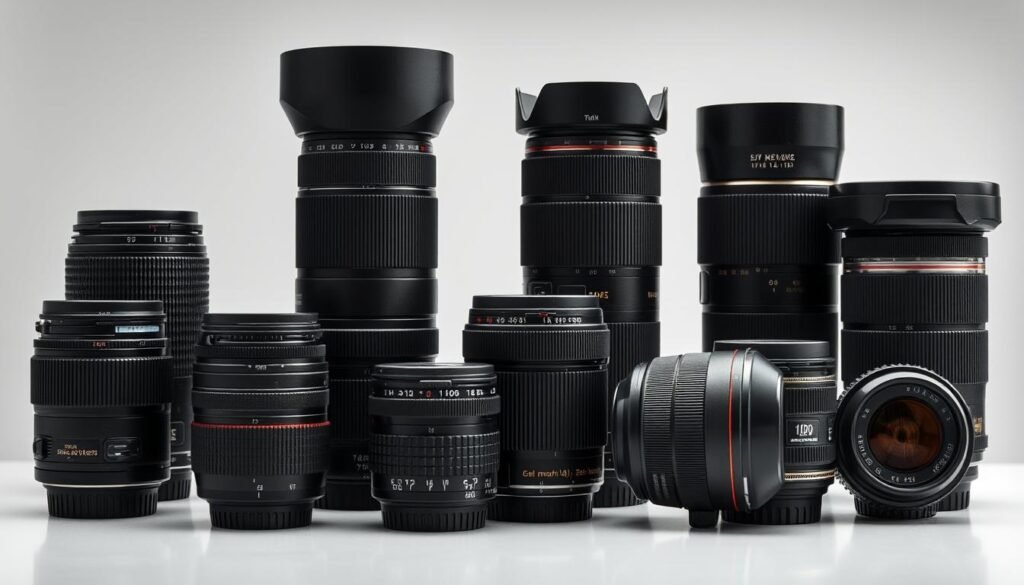
Key lens specifications to understand include:
- Focal Length: Measured in millimeters, determines field of view (wide-angle, standard, or telephoto)
- Maximum Aperture: Indicated by f-number (f/2.8, f/4, etc.), affects light gathering and depth of field
- Prime vs. Zoom: Prime lenses have fixed focal lengths with better optical quality; zoom lenses offer variable focal lengths for versatility
- Image Stabilization: Reduces blur from camera shake, especially important for telephoto and low-light shooting
- Mount Compatibility: Ensures the lens will physically attach to your camera body
ISO Performance and Dynamic Range
ISO sensitivity determines a camera’s ability to capture images in low light without excessive noise. Dynamic range refers to the camera’s ability to capture detail in both highlights and shadows within the same image.

Autofocus Systems
Modern cameras employ sophisticated autofocus systems that vary in speed, accuracy, and tracking capabilities. Advanced systems include features like eye detection, subject tracking, and low-light focusing assistance.
Phase Detection AF
Faster focusing system that measures the convergence of light rays to determine focus position. Common in DSLRs and newer mirrorless cameras.
Contrast Detection AF
More accurate but slower system that maximizes image contrast to achieve focus. Often used in live view modes and older mirrorless cameras.
Video Capabilities
Many modern cameras excel at both still photography and video recording. Key video specifications include resolution (4K, 1080p), frame rates, bitrate, and specialized features like log profiles for color grading.
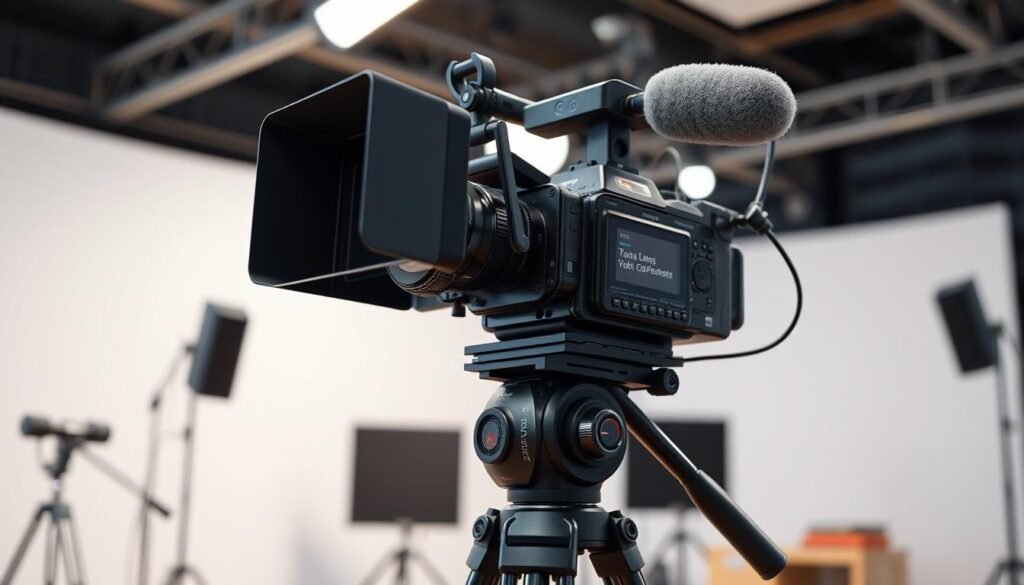
Important video features to consider:
- Resolution: 4K provides four times the detail of standard HD (1080p)
- Frame Rates: Higher frame rates (60fps, 120fps) enable smooth slow-motion footage
- Recording Limits: Some cameras have 30-minute recording limits due to regulatory classifications
- Stabilization: In-body or lens-based stabilization improves handheld video quality
- Audio Options: Microphone and headphone jacks for professional audio monitoring
Ready to explore cameras with advanced features?
Check out the latest models with cutting-edge technology for both photography and video.
How to Choose the Right Camera for Your Needs
With so many camera options available, finding the perfect match for your specific needs requires careful consideration of several factors. This buying guide will help you navigate the decision-making process.

Assess Your Photography Goals
Begin by honestly evaluating what you want to photograph and how you’ll use your images. Different photography styles have distinct equipment requirements.
Casual Photography
If you primarily want to capture family events, vacations, and everyday moments, a quality point-and-shoot camera or the latest smartphone might be sufficient. Look for ease of use, portability, and good automatic modes.
Enthusiast Photography
For those developing a serious interest in photography as a hobby, an entry-level DSLR or mirrorless camera offers room to grow. Prioritize manual controls, interchangeable lenses, and learning resources.
Professional Use
Professional photographers need robust equipment that delivers consistent results in challenging conditions. Invest in full-frame systems with weather sealing, dual card slots for backup, and professional-grade lenses.
Consider Your Budget
Camera equipment can range from a few hundred to many thousands of dollars. Establish a realistic budget that includes not just the camera body, but also lenses, memory cards, spare batteries, and other accessories.
| Budget Range | Camera Options | Typical Features | Best For |
| $0-$500 | Entry point-and-shoot, used entry DSLR, smartphone | Basic automatic modes, limited manual controls | Beginners, casual photographers |
| $500-$1,000 | Advanced point-and-shoot, entry DSLR/mirrorless with kit lens | Full manual controls, decent image quality, basic video | Enthusiast beginners, travel photography |
| $1,000-$2,000 | Mid-range DSLR/mirrorless, entry full-frame | Better sensors, faster autofocus, 4K video | Serious hobbyists, content creators |
| $2,000+ | Professional DSLR/mirrorless, specialized systems | Weather sealing, dual card slots, pro-grade build quality | Professionals, specialized photography |
Pro Tip: Consider buying last-generation models or certified refurbished cameras to save money without significantly compromising on features. Camera technology evolves incrementally, and slightly older models often offer excellent value.
Evaluate Size and Weight
The best camera is the one you’ll actually carry with you. Consider how and where you’ll use your camera, and how important portability is for your photography style.
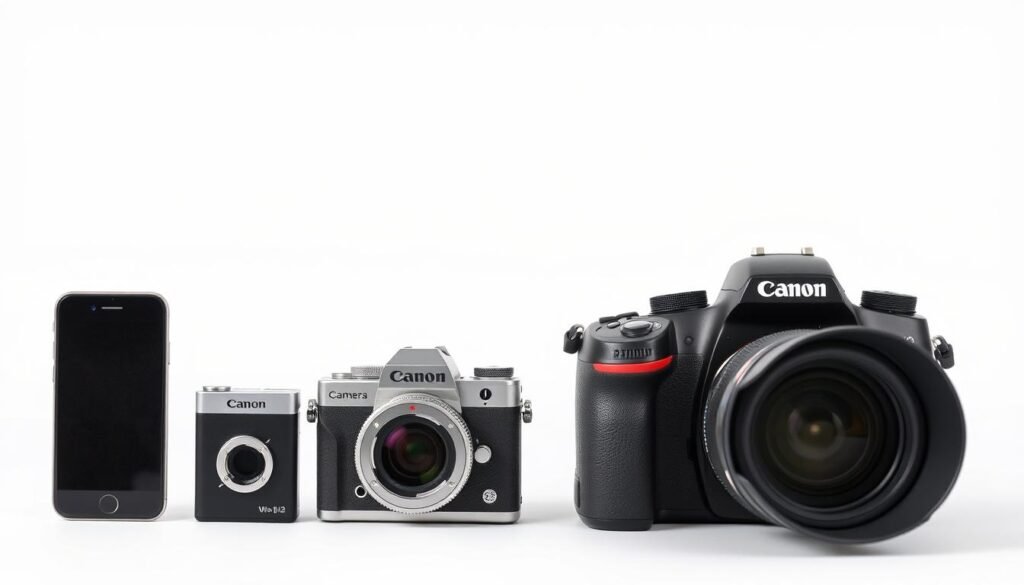
Research Ecosystem and Future Expansion
When investing in an interchangeable lens camera, you’re buying into an ecosystem of lenses and accessories. Research the available options and their costs before committing to a specific brand or system.
Consider these ecosystem factors:
- Lens Selection: Variety, quality, and price of compatible lenses
- Accessories: Availability of flashes, grips, remote triggers, etc.
- Future Compatibility: Brand’s commitment to the mount system
- Resale Value: How well the equipment holds value over time
- Community Support: Available tutorials, forums, and user groups
Test Before You Buy
Whenever possible, handle cameras before purchasing. Ergonomics, button layout, and menu systems vary significantly between brands and can greatly impact your shooting experience.
“The best camera isn’t always the one with the most megapixels or features—it’s the one that feels right in your hands and doesn’t get in the way of your creative vision.”
Need personalized camera recommendations?
Get expert advice tailored to your specific photography needs and budget.
Top Camera Recommendations for 2023
Based on expert reviews, user feedback, and value proposition, these cameras represent some of the best options in their respective categories. Each recommendation balances performance, features, and price point.
Best Entry-Level DSLR: Canon EOS Rebel T7
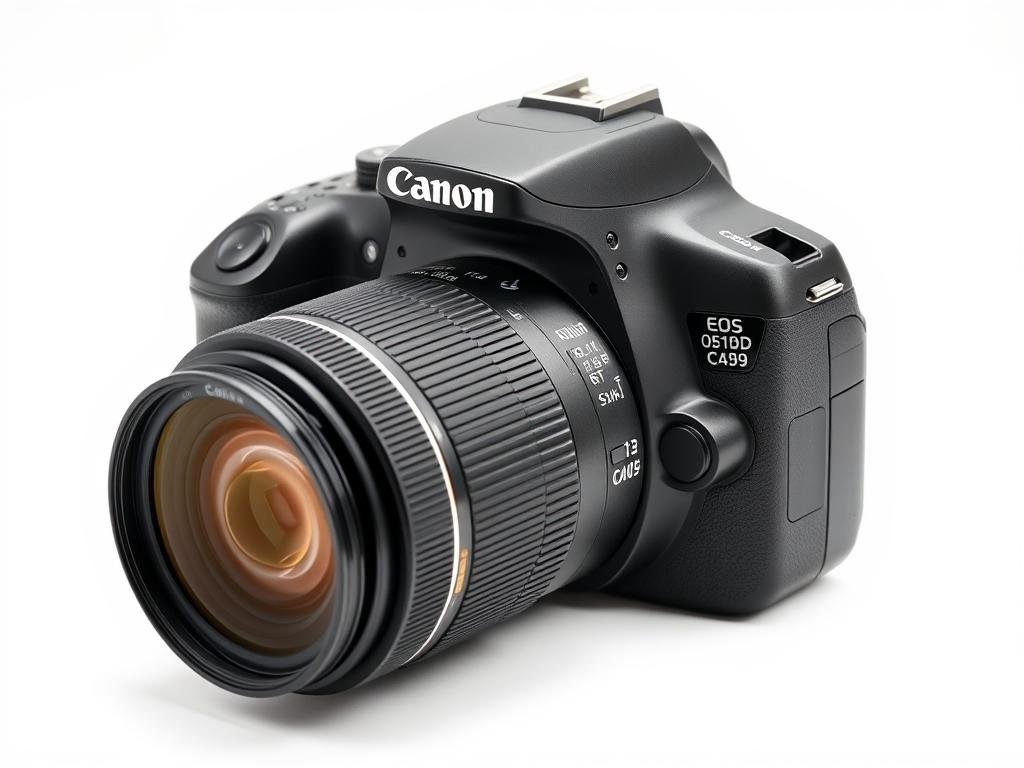
The Canon EOS Rebel T7 offers an excellent entry point into DSLR photography with its user-friendly interface, 24.1MP sensor, and compatibility with Canon’s vast lens ecosystem. The guided menu system makes it ideal for beginners transitioning from smartphone photography.
Key Features:
- 24.1MP APS-C CMOS sensor
- DIGIC 4+ image processor
- Full HD 1080p video recording
- 9-point autofocus system
- Built-in Wi-Fi and NFC connectivity
Best Mid-Range Mirrorless: Sony Alpha a6400
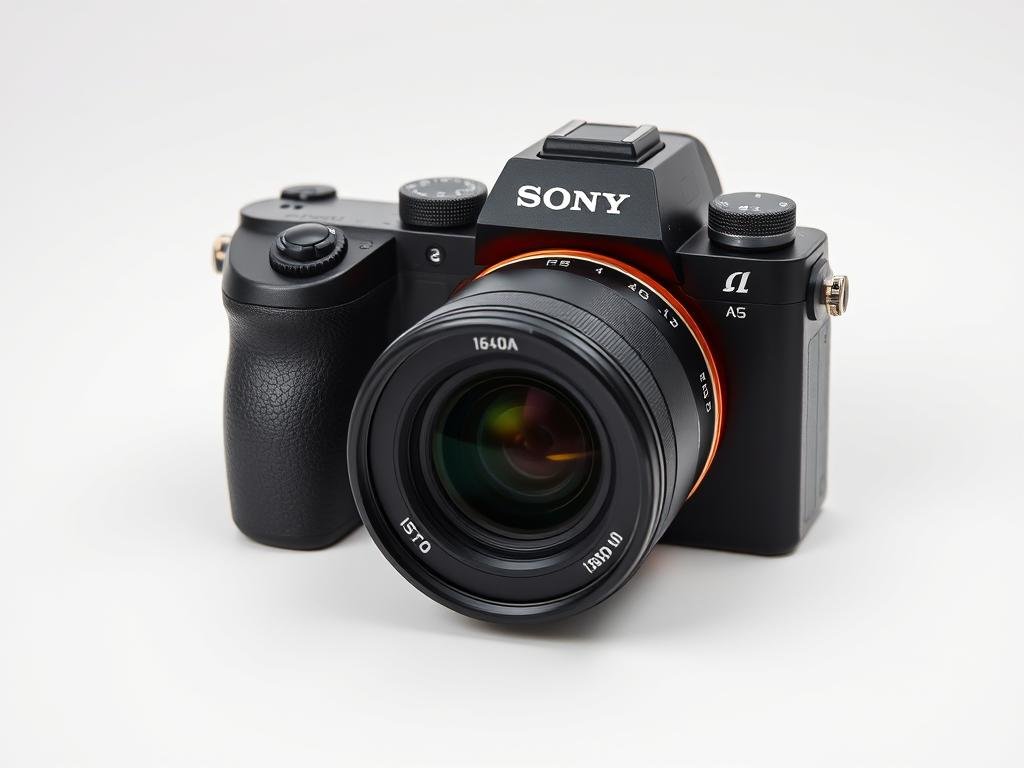
The Sony Alpha a6400 delivers exceptional performance in a compact package. Its lightning-fast autofocus system with real-time tracking and eye AF makes it perfect for action, portrait, and street photography. The 4K video capabilities also make it an excellent choice for content creators.
Key Features:
- 24.2MP APS-C Exmor CMOS sensor
- 425-point phase-detection autofocus
- Real-time Eye AF and tracking
- 4K video with full pixel readout
- 180° tiltable touchscreen for vlogging
Best Professional Full-Frame: Canon EOS R5

The Canon EOS R5 represents the pinnacle of mirrorless technology, offering exceptional image quality, blazing-fast autofocus, and groundbreaking 8K video capabilities. Its 45MP sensor delivers stunning detail while the in-body image stabilization provides up to 8 stops of shake correction.
Key Features:
- 45MP full-frame CMOS sensor
- In-body image stabilization (up to 8 stops)
- 8K RAW video recording
- 20fps electronic shutter (12fps mechanical)
- Dual card slots (CFexpress and SD UHS-II)
Best Action Camera: GoPro HERO11 Black

The GoPro HERO11 Black continues to set the standard for action cameras with its incredible HyperSmooth 5.0 stabilization, 5.3K video recording, and waterproof design. The new larger sensor captures more of the scene with a 8:7 aspect ratio that’s perfect for social media sharing in multiple formats.
Key Features:
- 5.3K60 video recording
- 27MP photos with 8:7 aspect ratio
- HyperSmooth 5.0 video stabilization
- Waterproof to 33ft (10m) without case
- TimeWarp 3.0 for stabilized time-lapse
Ready to upgrade your photography gear?
Explore these top-rated cameras and find the perfect match for your creative vision.
The Future of Camera Technology
Camera technology continues to evolve at a rapid pace, with innovations that expand creative possibilities and make advanced imaging more accessible. Understanding these trends can help you make forward-looking purchasing decisions.

Computational Photography
Computational photography uses digital processing to overcome the physical limitations of camera hardware. This technology, pioneered in smartphones, is increasingly finding its way into dedicated cameras.
HDR and Tone Mapping
Advanced HDR processing combines multiple exposures in real-time to capture greater dynamic range than traditional single exposures, preserving details in both highlights and shadows.
Night Mode
Computational night photography uses multiple exposures and intelligent noise reduction to create clean, detailed images in extremely low light without a tripod.
Artificial Intelligence in Cameras
AI is revolutionizing camera technology, with machine learning algorithms enhancing everything from autofocus to image processing. These smart features make professional-quality results more accessible to casual photographers.
Key AI camera advancements include:
- Subject Recognition: Cameras that identify and track specific subjects like people, animals, or vehicles
- Scene Optimization: Automatic adjustment of settings based on recognized scene types
- Smart Composition: AI-suggested framing and cropping for better images
- Automated Editing: In-camera processing that applies professional-style edits
- Voice Control: Natural language interfaces for hands-free operation
8K Video and Beyond
Video resolution continues to increase, with 8K recording (7680 × 4320 pixels) now available in high-end cameras. This ultra-high resolution provides more detail and flexibility in post-production, especially for professional videographers.
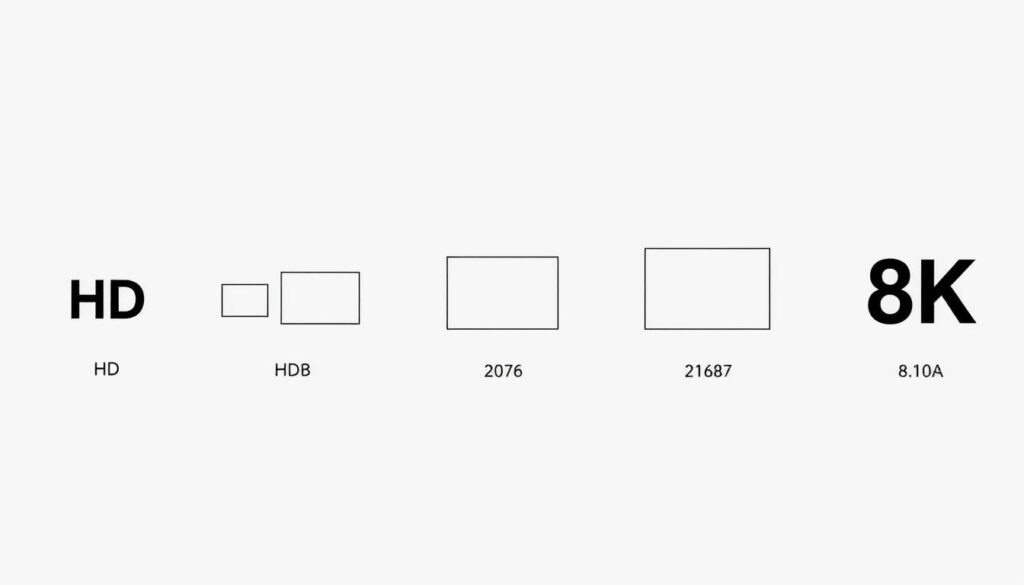
Mobile Integration and Connectivity
Modern cameras increasingly feature seamless integration with mobile devices, allowing for remote control, instant sharing, and cloud backup. This connectivity bridges the gap between dedicated cameras and the convenience of smartphones.
Wireless Transfer
Built-in Wi-Fi and Bluetooth enable automatic transfer of images to smartphones or cloud storage, ensuring your photos are backed up and ready to share.
Remote Control
Smartphone apps provide remote viewfinder display, shooting controls, and access to camera settings, perfect for self-portraits, wildlife photography, or complex setups.
Immersive Imaging: 360° and VR Cameras
360-degree cameras capture entire scenes in all directions, creating immersive content for virtual reality experiences. These specialized cameras are finding applications in real estate, tourism, and interactive storytelling.
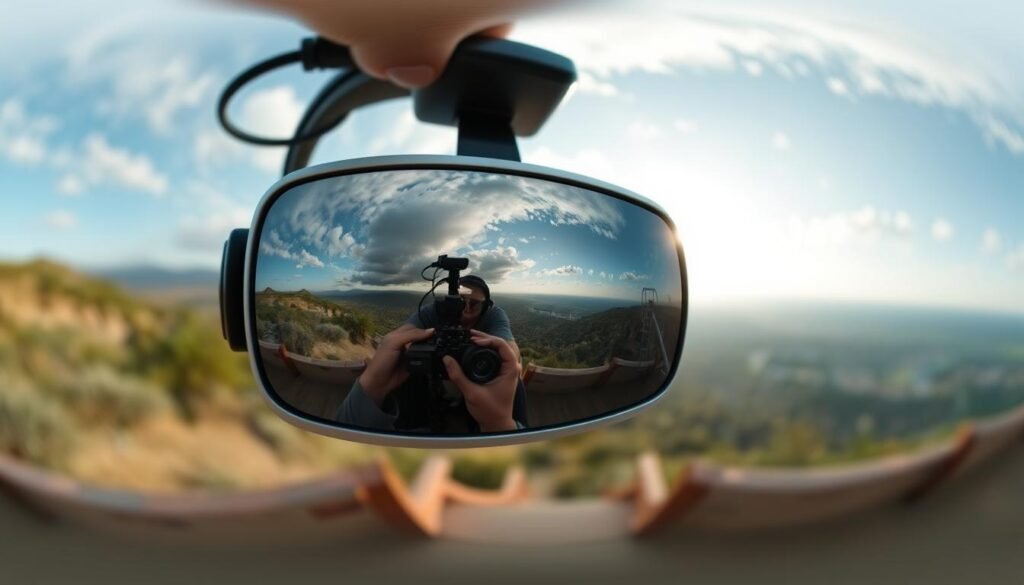
Stay ahead of camera technology trends
Subscribe to our newsletter for the latest updates on camera innovations and photography techniques.
Conclusion: Finding Your Perfect Camera
The world of cameras offers unprecedented choice for photographers and videographers at every skill level. From pocket-sized point-and-shoots to professional systems, today’s cameras combine technical excellence with user-friendly features that make capturing life’s moments more accessible than ever.
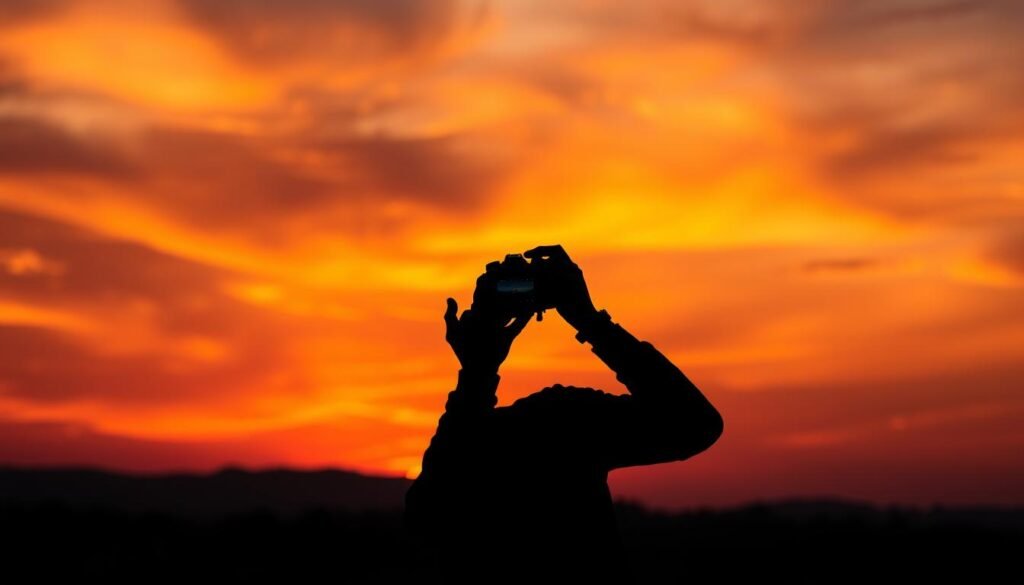
When choosing a camera, remember that the best option is one that meets your specific needs, fits your budget, and inspires you to use it regularly. Consider how and where you’ll use your camera, what subjects you’ll photograph, and how much you’re willing to invest in developing your skills.
As camera technology continues to evolve, we’re seeing the lines blur between different categories. Smartphones incorporate computational photography techniques once reserved for high-end systems, while professional cameras become more accessible with intelligent automatic modes. This democratization of photography tools means more people can express their creativity through visual storytelling.
Whether you’re documenting family memories, pursuing photography as an art form, or using images to communicate professionally, today’s cameras offer the tools to bring your vision to life. The perfect camera is waiting—it’s time to start capturing your world in a new light.
Ready to start your photography journey?
Explore our comprehensive selection of cameras, lenses, and accessories for every skill level and budget.
Frequently Asked Questions About Cameras
Is a DSLR or mirrorless camera better for beginners?
Both DSLR and mirrorless cameras can be excellent choices for beginners, with their own advantages. DSLRs typically offer better battery life and an optical viewfinder, while mirrorless cameras are more compact and provide a preview of your exposure settings before taking the shot. For absolute beginners, mirrorless cameras often have a shorter learning curve since what you see on the screen is exactly what you’ll get in your final image.
How important are megapixels when choosing a camera?
While megapixels contribute to image resolution, they’re just one factor in overall image quality. Most modern cameras have sufficient megapixels (16MP+) for standard printing and display. Other factors like sensor size, lens quality, and image processing have a greater impact on final image quality. Higher megapixels become important primarily when you need to make very large prints or crop extensively.
Are smartphone cameras good enough for serious photography?
Modern smartphone cameras can produce impressive results, especially in good lighting conditions. They excel at computational photography techniques like HDR and night mode. However, they still have limitations compared to dedicated cameras, particularly in low light, zoom capabilities, and creative control. For casual photography and social media sharing, today’s flagship smartphones are certainly capable. For professional work or specialized photography (wildlife, sports, etc.), dedicated cameras still offer significant advantages.
What’s the best camera for travel photography?
The ideal travel camera balances image quality with portability. Compact mirrorless cameras with versatile zoom lenses are popular choices, offering excellent image quality without the bulk of DSLR systems. Models like the Sony Alpha a6400, Fujifilm X-T30, or Olympus OM-D E-M10 Mark IV strike a good balance. If maximum portability is your priority, advanced point-and-shoot cameras like the Sony RX100 series or Canon G7X Mark III offer excellent image quality in pocket-sized packages.
How often should I upgrade my camera?
Camera technology typically advances incrementally, with major leaps occurring every 4-5 years. Consider upgrading when your current camera limits your creative vision or when new features would significantly improve your workflow. For casual photographers, a good camera can last 5-10 years. Professional photographers may upgrade more frequently (2-4 years) to maintain competitive edge. Often, investing in better lenses rather than a new camera body will have a more significant impact on image quality.


